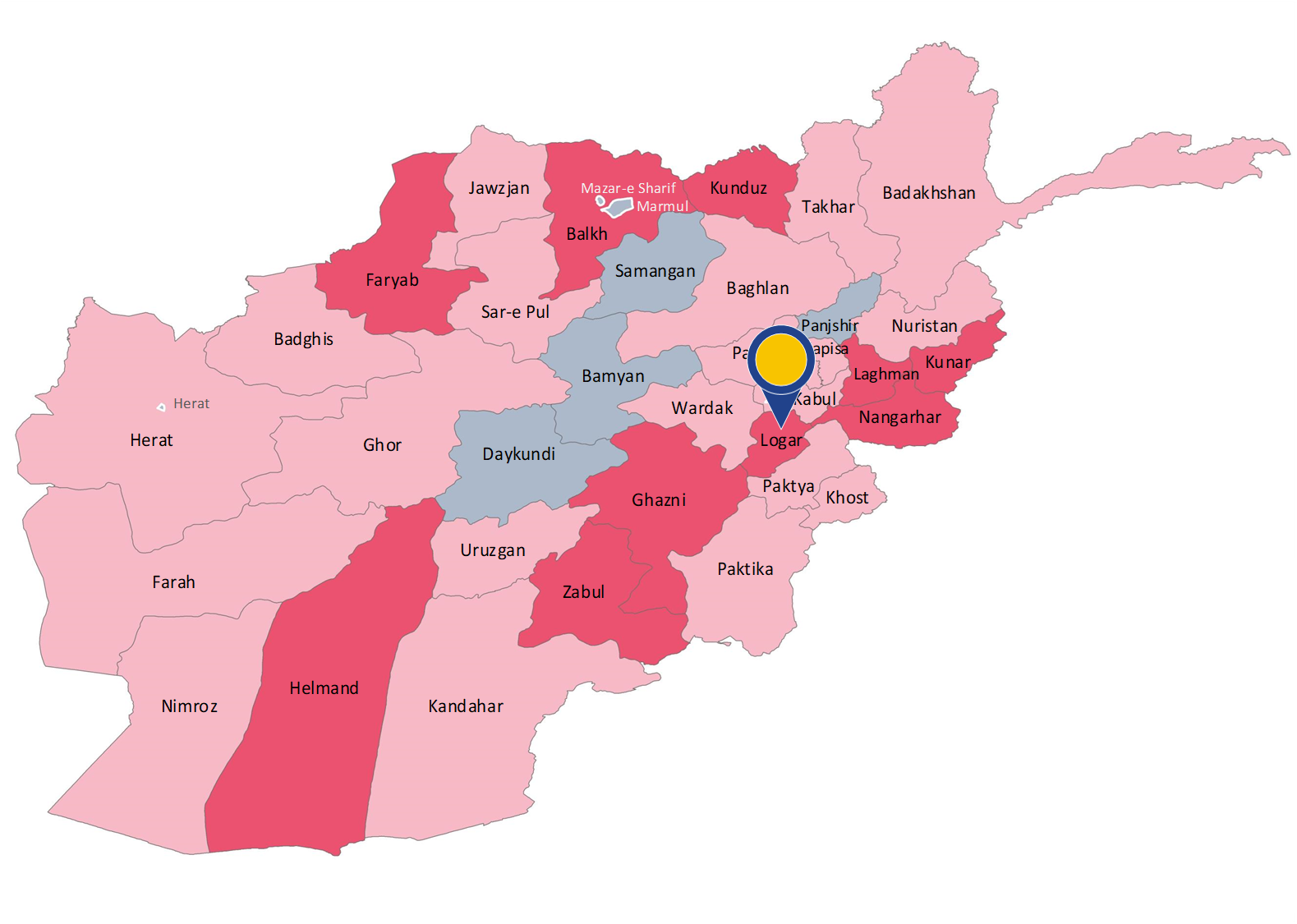|
⚠ |
|
Please note that this country guidance document has been replaced by a more recent one. The latest versions of country guidance documents are available at /country-guidance. |
Logar province has a population of approximately 434 000. The main ethnic groups are Pashtun, Tajik and Hazara. It is located in central Afghanistan and is divided in 7 districts. The province borders Kabul, Nangarhar, Paktya, Ghazni and Wardak. The Kabul-Gardez-Khost highway passes through the districts of Mohammad Agha and Pul-e-Alam. Logar province has served as a strategic crossing-point for Taliban fighters, not only due to its proximity to Kabul, but also because it provided easy access to AGEs’ fronts in the nearby provinces, as well as in Pakistan.

In 2019 – 2020, Logar was described by sources as being among the provinces in the central region of the country where the Taliban had influence and control and were regularly attacking government forces in both the provincial capital and the districts. Logar was also one of the 12 provinces in which Al Qaeda was reportedly ‘covertly active’. No security incidents specifically attributed to ISKP were recorded by ACLED.
Three of the districts of Logar were categorised by LWJ as under Taliban control, three as contested, and one district as under government control or undetermined.
ACLED collected data on 468 violent events in the period from 1 March 2019 to 30 June 2020 (average of 6.7 incidents per week), of which 295 were coded as ‘battles’, 148 as ‘explosions/remote violence’ and 25 as ‘violence against civilians’.
Examples of incidents include military operations as well as airstrikes, carried out by government security forces (AAF, NDS). Incidents of civilians being killed in attacks by the Taliban, including bombings, were also reported. Furthermore, Taliban militants attacked drivers on the main roads and government employees in June 2020.
Further impact on the civilian population included, for example, closure of schools and madrasas due to the threats by Taliban insurgents. In November 2019, the alleged sexual abuse of hundreds of boys from several schools in rural areas of Logar province was reported.
UNAMA documented 218 civilian casualties (95 deaths and 123 injured) in 2019, representing 50 civilian victims per 100 000 inhabitants. This was an increase of 52 % compared to 2018. The leading causes for the civilian casualties were airstrikes, followed by ground engagements, targeted killings, and complex attacks.
RS ranked Logar in the category of provinces where the number of civilian casualties was between 26 and 50 for the first quarter of 2020, and between 101 and 125 for the second quarter.
In the period 1 March 2019 – 30 June 2020, 1 925 persons were displaced from Logar, the majority of whom (1 155) within the province itself. No conflict-induced internal displacement to Logar province from other provinces was reported in this period.
|
|
Looking at the indicators, it can be concluded that ‘mere presence’ in the area would not be sufficient to establish a real risk of serious harm under Article 15(c) QD in the province of Logar, however, indiscriminate violence reaches a high level, and, accordingly, a lower level of individual elements is required to show substantial grounds for believing that a civilian, returned to the territory, would face a real risk of serious harm within the meaning of Article 15(c) QD.
|
